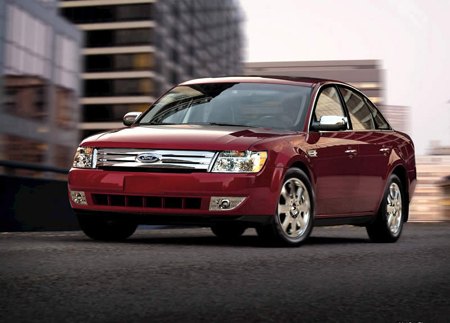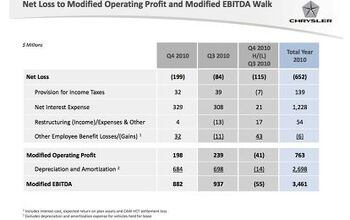Depreciation Kills
“Is that yours?” Millions of car buyers spend billions of dollars hoping that this statement will be born of admiration rather than pity. When these words come out of a car dealer’s mouth at trade-in time, they can be especially hurtful– even if the salesman is as honest as their spiel is long. That’s the moment when most car buyers finally discover whether or not their automotive “investment” has walked off a cliff and fallen into the financial abyss known as depreciation. Here’s how to avoid the freefall…
It simply can’t be stressed enough. Depreciation is the mother of all automotive operating costs. Even if gas soars to four bucks a gallon, depreciation STILL repesents the biggest hit to the car owner’s wallet. To wit: The average cost for a new car in these great United State currently hovers around $24k. After seven to eight years– not far from the ever-increasing average amount of time American new car buyers hold onto their whips– the car’s owner will be looking at a depreciation rate somewhere between 70 percent and 85 percent.
In other words, come trade-in time, they’re facing an average loss between $16,800 and $20,400. That’s before any considering of the “opportunity cost” (i.e. money lost by NOT investing the cash in a house/money market/alpaca farm). Or inflation.
Bottom line: if you want to avoid depreciation, forget about buying a new car. Yes, a new car offers warranty-related peace of mind. But it's an extremely expensive security blanket. A carefully-selected used car may need repairs, but in most cases, they'll still cost a lot less than depreciation..
If you're willing to forgo that new car smell, figuring-out your buying pattern is the next step. There are two basic buying types: Keepers (keep cars for the long haul) and Traders (trade them in after a few years).
Many Keepers are ready, willing and able to enjoy a vehicle for well over a decade. “Keepers” believe their car should be a cruising companion until the point where the perceived risk of owning it (usually the cash outlay for major repairs) outweighs the fact that ownership itself [eventually] costs them nothing/virtually nothing. In the automotive world, they are what we call "married."
The key to being a successful Keeper: marry genuine quality, not reputation. Say what you will about “import bigots” and brand loyalty, but the automotive market is a place where perceived reputation translates into dollars and cents. Toyotas and Hondas routinely receive price premiums– even though many of their products fall far short in value and performance as compared to their peers. By the same token, overlooked or unloved models represent an excellent way to keep the hounds of depreciation at bay.
In most cases, car buyers get more bang for their buck (power, features, etc.), lower up-front costs, and lower depreciation costs simply by buying a used example of a less well known/accepted car. Mitsubishi, Subaru, Saturn– there are plenty of brands that sell excellent products that simply fail to capture the public imagination. The fact that these cars take a huge initial hit on depreciation works entirely in your favor, both buying and selling.
For example, if you’re looking at a midsized commuter, a 2004 Buick Century or 2004 Oldsmobile Bravada, both of which finished first in J.D. Power’s recent dependability study and received strong ownership ratings, will cost thousands less to purchase than a comparable Camry, Accord or Pilot. Remember: badge snobs must pay for the privilege.
The Trader is a different animal, a shorter time horizon than the Keeper, requiring a different strategy.
To avoid depreciation, Traders are best off buying a carefully vetted five to seven-year-old car of their choice. At that point, depreciation has exacted the majority of its revenge. With due diligence, Traders can get a superb return on their money. The average five-year-old car kept for two years experiences minimal depreciation (20 percent or so). The average seven-year-old car experiences even less, and so on. It's a simple but highly effective buying pattern.
And then there is the Sage. The Sage can buy nearly anything and make a buck at it. Yours truly has enjoyed hundreds of vehicles over the last few years– and it’s only taken huge chunks of my free time to do it. Mechanics, auto auctioneers, wholesalers, retailers and hobbyists will always have an edge when it comes to depreciation costs. We know what’s hot, and we know plenty of people who appreciate hotness.
Again, wisdom comes at a cost. Sages don’t pay for depreciation (much), but their insight requires years of hard work, money (mistakes are never free) and a feel for the auto biz' cycles of fashion and fame.
Whether you’re a Keeper, Trader or Sage, remember: a car is an expense. It may excite you or be a daily nuisance, but it is still an expense. By minimizing depreciation you will avoid the single largest cost in the process. With that money you can save the world, buy groceries or save up for your next car.
More by Steven Lang
Latest Car Reviews
Read moreLatest Product Reviews
Read moreRecent Comments
- SCE to AUX Norway is in Europe, and Tesla is an American automaker - no problems there.I wouldn't use Ford as the bellwether.https://www.reuters.com/business/autos-transportation/tesla-extends-lead-norway-evs-take-record-82-market-share-2024-01-02/https://elbil.no/english/norwegian-ev-policy/
- Steve Biro If the U.S. government wants to talk about banning all connected cars - or at least the collection and sharing of information from said vehicles - I’m all ears. Otherwise, don’t waste my time.
- Ajla Both parties are in favor of banning Chinese vehicles so I don't see how it won't happen in the next year.
- Add Lightness I don't waste a lot of time watching nothing much happening by watching the YouTube 6 minute highlights.
- MrIcky from my rental fleet experience, id rather drive one of these than a camry.


































Comments
Join the conversation
beken: replace the "Century" with "Lesabre", same year, and you have the experience we had with Buick. Crap. Similar repairs, plus electrical problems and the genuine plastic engine. A used car probably would have been better. John
My recent experience: Needed to replace a 2001 Acura TL that has broken down twice and stranded my wife (once in the middle of nowhere down in Mississippi). Fortunately for us we had enough money saved up to where we could pay cash for a car as long as we kept it to under $17k. After doing some research I decided we should consider post '06 Hyundai Sonata's due to safety features/reliability/value. I knew to keep it under our budget (after taxes/fees/etc...) it would have to be a used one. I've never had to shop for my own car before so it was a new experience for sure! I think we drove 4 or 5 cars and made offers on each of those before finally closing a deal on an '06 4cyl with 10,900 miles for $15k out the door. I've been quite pleased with it and believe I made a good purchase but it was much harder and took a lot longer to get things done than I had anticipated. However, if I had really been in a pinch and had to replace a car in a much more immediate time frame, I'm not sure what we would have done. Now I need to keep my 2000 Saturn SL1 running for a few more years so I can save up enough to pay cash out for it's replacement! :P